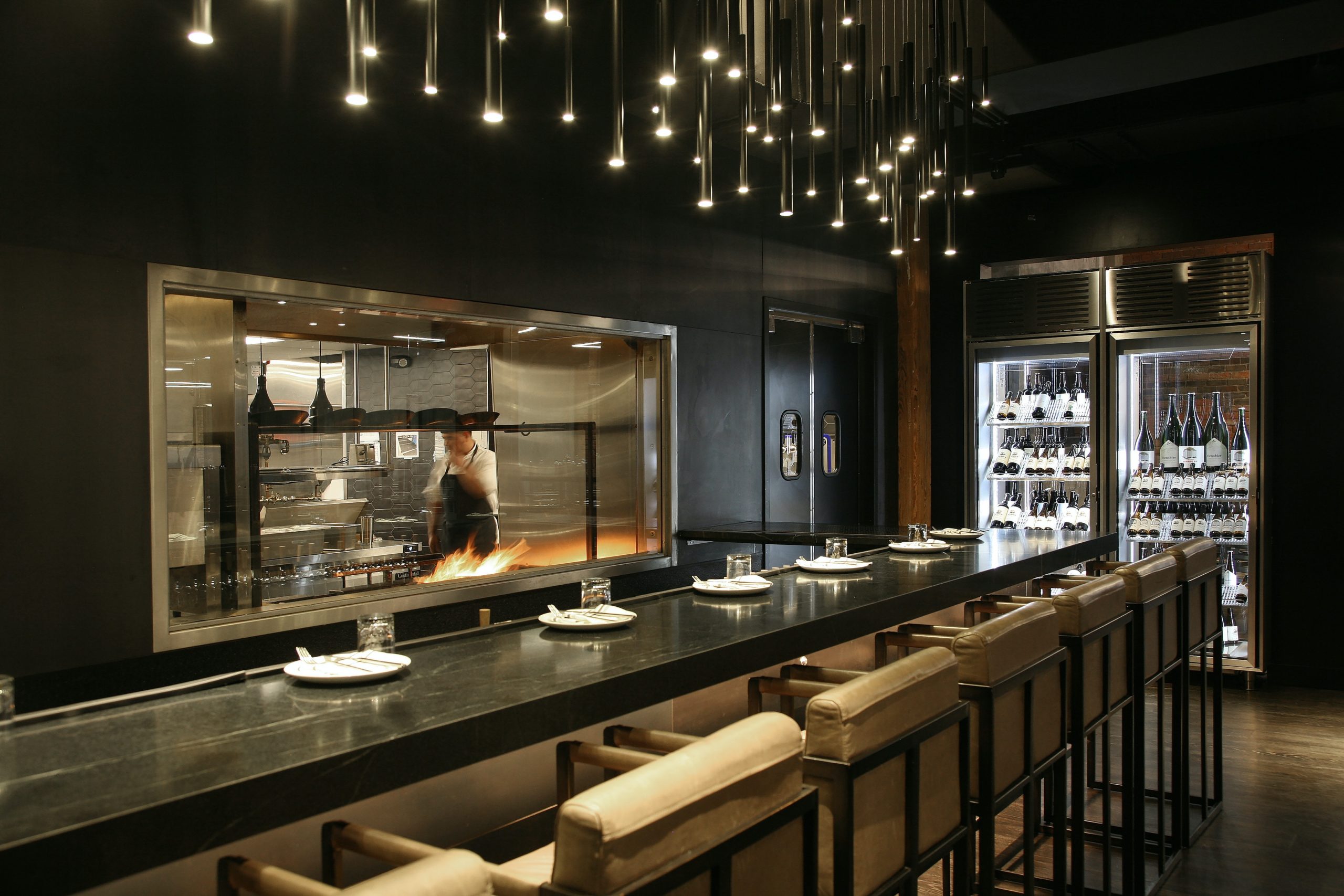Restaurant Kitchen Electricity Consumption in the UK
The United Kingdom boasts a rich culinary landscape, with restaurants of various cuisines and sizes spread nationwide. From quaint cafes to high-end fine dining establishments, the UK restaurant industry plays a vital role in its cultural and economic identity. However, with great culinary delights come significant energy demands, particularly in the restaurant kitchen. In this article, we will examin strategies to slash your restaurant kitchen electricity consumption, allowing you to optimize your operations while reducing your environmental footprint.
Significance of Electricity Consumption in Restaurants
While dining in a restaurant, customers might not consider the energy required to prepare their meals. However, for restaurant owners and operators, electricity consumption is a substantial operational cost. Beyond the financial implications, understanding and optimising electricity consumption in restaurant kitchens is pivotal for environmental sustainability. In a world increasingly concerned about carbon footprints, restaurants are responsible for reducing their energy usage and contributing to a greener planet.
Factors Affecting Kitchen Electricity Consumption:
- Kitchen Equipment
Restaurant kitchens are bustling hubs of activity, equipped with an array of appliances, including ovens, stoves, grills, refrigerators, and dishwashers. Each of these appliances consumes varying amounts of electricity. For instance, older and inefficient equipment can significantly contribute to higher energy bills. Upgrading to energy-efficient appliances reduces electricity consumption and enhances the overall kitchen performance.
- Lighting
Proper lighting is essential in restaurant kitchens to ensure food is prepared safely and accurately. However, the lighting type and intensity can impact electricity consumption. LED lighting, known for its energy efficiency, is a smart choice for restaurant kitchens. Moreover, implementing motion sensors and timers can further optimise lighting usage, reducing unnecessary energy wastage.
- Ventilation Systems
Ventilation is crucial in restaurant kitchens to maintain air quality and ensure a comfortable working environment. However, ventilation systems like exhaust fans and hoods can be energy-intensive. Regularly maintaining and cleaning these systems can improve efficiency, reducing electricity consumption without compromising safety or comfort.
- Workflow and Staff Training
Efficient workflow and well-trained staff can significantly influence electricity consumption. By organising kitchen tasks logically and training staff to use the equipment effectively, restaurants can reduce idle time and energy waste. Implementing clear guidelines and promoting a culture of energy conservation among the kitchen team can go a long way in cutting down electricity costs.

Sustainable Practices for Restaurant Kitchens
- Menu Planning
Menu planning plays a pivotal role in electricity conservation. By designing a menu that utilises energy-efficient cooking methods and equipment, restaurants can minimise electricity consumption. For instance, offering more grilled or roasted dishes instead of deep-frying can yield substantial energy savings.
- Energy Audits
Conducting regular energy audits is essential for identifying areas of improvement. Professional energy auditors can pinpoint energy wastage and recommend tailored solutions. By investing in energy audits, restaurants can reduce electricity consumption and enhance their overall sustainability efforts.
- Renewable Energy Sources
Transitioning to renewable energy sources, such as solar panels or wind turbines, can be a long-term strategy to reduce electricity bills and minimise the carbon footprint of restaurant kitchens.
- Solar Panels: Solar panels transform sunlight into electricity, offering a clean and sustainable source of energy. Excess energy can be stored or fed back into the grid, potentially reducing electricity bills.
- Wind Turbines: Wind turbines can generate electricity in regions with suitable wind conditions. Small-scale wind turbines can supplement a restaurant’s power supply, especially in rural areas.
Government incentives and grants are often available to support such initiatives, making renewable energy more accessible to restaurants.
By understanding the factors affecting consumption and implementing sustainable practices, restaurants can reduce their operational costs and contribute to a greener and more sustainable future. It is imperative that the restaurant industry acknowledges its role in environmental responsibility and takes proactive steps to minimise its impact while continuing to offer exceptional dining experiences to its patrons.
Understanding Electricity Consumption
- Basics of Electricity Consumption
Before examining the specifics of electricity consumption in restaurant kitchens, it’s essential to grasp how electricity is consumed. Electricity consumption is measured in kilowatt-hours (kWh), representing energy used over time. This energy is primarily used in a restaurant kitchen for cooking, lighting, ventilation, and refrigeration.

Factors Influencing Consumption in Restaurant Kitchens
- Kitchen Size and Layout
The size and layout of a restaurant kitchen directly impact electricity consumption. Larger kitchens often require more energy to maintain optimal conditions and operate efficiently. A well-organised kitchen layout can minimise the distance between workstations, reducing the need for excessive lighting and equipment usage. Efficient spatial planning can lead to significant energy savings.
- Type of Appliances and Equipment
A restaurant kitchen’s choice of appliances and equipment significantly influences electricity consumption. Modern, energy-efficient appliances are designed to perform tasks using less energy compared to their older counterparts. For example, convection ovens and induction cooktops are more energy-efficient options. Regular maintenance and calibration of kitchen equipment are also essential to ensure they operate at peak efficiency.
- Operational Hours
The duration for which a restaurant kitchen operates directly impacts electricity consumption. Kitchens that operate for extended hours, such as those serving breakfast, lunch, and dinner, may have higher energy bills. Implementing scheduling practices that align with peak customer traffic can help optimise operational hours and reduce unnecessary energy consumption during low-demand periods.
Importance of Efficient Energy Use
Efficient energy use in restaurant kitchens is of paramount importance for several reasons:
Cost Savings: Energy-efficient practices reduce electricity bills, benefiting the restaurant’s bottom line. Lower operational costs can translate into higher profit margins.
Environmental Impact: Restaurants are increasingly under scrutiny for their environmental practices. By reducing electricity consumption, restaurants can decrease their carbon footprint and contribute to a more sustainable planet.
Customer Appeal: Eco-conscious consumers often choose restaurants that are committed to sustainability. Energy-efficient practices can be a selling point for attracting environmentally aware customers.
By adopting energy-efficient practices, your restaurants can achieve cost savings, reduce their environmental impact, attract more customers, and ensure compliance with relevant regulations.
Methods to Measure Electricity Consumption
Accurately measuring electricity consumption in restaurant kitchens is crucial for identifying areas of improvement and tracking progress. Several methods can be employed:
Smart Meters: Smart meters provide real-time data on electricity usage, allowing restaurants to monitor consumption on a granular level. These meters can be installed for individual appliances or the entire kitchen, providing valuable insights.
Sub-Metering: Sub-metering involves installing additional meters for specific areas or equipment within the kitchen. This method offers a detailed breakdown of energy usage, helping pinpoint high-consumption areas.
Utility Bills: Restaurant owners can track their electricity consumption by reviewing utility bills. While this method provides a historical overview, it may offer something other than real-time data or detailed insights into specific appliances.
Energy Monitoring Systems: Energy monitoring systems use sensors and software to monitor and record electricity usage continuously. They provide comprehensive data on when and where energy is consumed, enabling proactive energy management.

Energy-Efficiency Practices
Efforts to enhance energy efficiency in restaurant kitchens encompass a range of strategies and practices:
- Upgrading Kitchen Equipment
One of the most impactful measures a restaurant can take to reduce electricity consumption is upgrading kitchen equipment:
Energy-Efficient Appliances: Replacing outdated, energy-guzzling appliances with modern, energy-efficient models is a significant step. Seek out appliances with ENERGY STAR certification, as they adhere to rigorous energy efficiency standards.
LED Lighting: Transitioning to LED lighting not only saves on electricity bills but also improves visibility in the kitchen. LED bulbs last longer and use less energy than traditional incandescent bulbs.
Variable Speed Motors: Opt for those with variable speed motors in appliances like ventilation hoods and refrigeration units. These motors adjust their speed according to the workload, reducing energy usage during periods of low demand.
Regular Maintenance: Scheduled maintenance and timely repairs are essential to keep equipment operating at peak efficiency. Well-maintained appliances consume less electricity and have longer lifespans.
Optimizing Kitchen Layout
Efficient kitchen layout and design can have a substantial impact on energy conservation:
Workflow Efficiency: Organise workstations and kitchen equipment to minimise the distance staff needs to travel. A well-optimised kitchen layout reduces unnecessary movement, saving energy and increasing productivity.
Ventilation Planning: Ensure that ventilation hoods and exhaust systems are strategically placed to effectively capture and expel heat and cooking fumes. Proper ventilation reduces the need for excessive cooling and lighting.
Insulation: Adequate insulation in kitchen walls, ceilings, and doors helps maintain a consistent temperature. This reduces the workload on heating and cooling systems, lowering electricity consumption.
Related articles:
Energy Consumption In Restaurants
The Inflation Effect On Your Restaurant
Employee Training on Energy Conservation
Empowering kitchen staff with the knowledge and skills to conserve energy is essential:
Training Programs: Implement training programs that educate employees about energy-efficient practices. This includes guidelines on equipment usage, lighting, and temperature control.
Promote Awareness: Foster a culture of energy conservation by raising awareness among staff. Encourage the team to promptly report equipment malfunctions and turn off lights and appliances when not in use.
Incentives: Offer incentives or recognition for employees who consistently contribute to energy-saving efforts. Recognising and rewarding responsible energy use can motivate staff to be more conscious of their actions.
Regular Updates: Keep employees informed about changes in energy-efficient equipment or procedures. Hold regular meetings or training sessions to ensure everyone is up-to-date with best practices.
These measures reduce electricity consumption and contribute to cost savings and a more sustainable restaurant operation. By combining technological upgrades with a commitment to training and awareness, restaurants can achieve a more efficient and environmentally responsible kitchen operation.

Cost Analysis
Efficiently managing electricity costs in restaurant kitchens requires a comprehensive approach that involves calculation, reduction strategies, and assessing the return on investment (ROI) for energy-efficient upgrades:
- Calculating Electricity Costs in Restaurant Kitchens
Gather Utility Data: Begin by collecting utility bills for electricity over several billing cycles. This data will provide a historical overview of electricity consumption and costs.
Identify Energy Consumption Patterns: Analyse the utility data to identify consumption patterns. Note any fluctuations or trends in electricity usage, which can help pinpoint areas for improvement.
Cost per kWh: Determine the cost per kilowatt-hour (kWh) from your utility bills. This represents the rate at which you incur charges for electricity.
Appliance and Equipment Analysis: Evaluate the energy consumption of individual appliances and equipment in your kitchen. Manufacturers typically provide energy usage information in product manuals or online resources.
Calculate Total Electricity Costs: Multiply each appliance’s energy usage (in kWh) by the cost per kWh. Sum up these values to calculate the total electricity costs for your restaurant kitchen.
ROI of Energy-Efficient Upgrades
Cost of Upgrades: Calculate the total cost of energy-efficient upgrades, including equipment replacement, insulation, and other enhancements.
Expected Savings: Estimate the annual energy savings resulting from these upgrades. Consider factors like reduced electricity consumption and lower maintenance costs.
Payback Period: Divide the cost of upgrades by the expected annual savings to determine the payback period. This represents the time it will take for the energy-efficient upgrades to pay for themselves through reduced energy expenses.
Return on Investment (ROI): Calculate the ROI by subtracting the initial cost of upgrades from the total savings over a specific period (e.g., five years) and then dividing the result by the initial price. This percentage indicates the return you can expect on your investment in energy-efficient upgrades.
Long-Term Benefits: Consider the long-term benefits of energy-efficient upgrades, such as increased property value, enhanced reputation for sustainability, and reduced environmental impact.
Understanding your energy usage, optimising practices, and investing in energy-efficient solutions can reduce expenses, improve profitability, and contribute to a greener and more efficient kitchen environment.
Energy-Saving Technologies
Adopting energy-saving technologies is a proactive approach for restaurants to reduce electricity consumption and promote sustainability:
- Smart Appliances and Automation
Smart Kitchen Equipment: Invest in smart appliances and equipment with energy-saving features. These devices can automatically adjust power levels based on workload or schedule, optimising energy use.
Programmable Thermostats: Install programmable thermostats for heating, ventilation, and air conditioning (HVAC) systems. These thermostats allow you to set temperature schedules, ensuring that heating and cooling operate efficiently during operational hours.
Motion Sensors and Timers: Incorporate motion sensors and timers for lighting in the kitchen. Lights automatically turn off when no motion is detected, preventing unnecessary energy consumption.
Connected Kitchen Management involves utilising kitchen management systems that provide real-time data on equipment performance and energy use. These systems allow for remote monitoring and control, enabling adjustments for maximum efficiency.
- Energy Monitoring Systems
Smart Meters: Install intelligent meters to monitor electricity consumption in real time. These meters provide detailed data to help you identify peak usage times and implement energy-saving strategies.
Energy Management Software: Implement energy management software that collects data from various sources, including smart meters and kitchen equipment. This software provides insights into energy usage patterns and identifies areas for improvement.
Dashboard Displays: Install dashboard displays in the kitchen to provide real-time feedback to staff about energy consumption. Visual cues can encourage employees to be more conscious of their energy use.
Alert Systems: Set up alert systems that notify you when energy consumption exceeds predefined thresholds. These alerts quickly respond to abnormal energy use, preventing excessive costs.
Adopting energy-saving technologies in restaurant kitchens effectively reduces electricity consumption, lowers operational costs, and contributes to a more sustainable future. Smart appliances, renewable energy sources, and energy monitoring systems offer innovative solutions that save money and demonstrate a commitment to environmental responsibility. Restaurants that embrace these technologies can benefit both financially and environmentally while providing customers with a more eco-conscious dining experience.
Best Practices for Restaurant Owners
Restaurant owners can play a pivotal role in promoting energy efficiency and sustainability within their establishments by following these best practices:
- Developing an Energy Conservation Strategy
Set Clear Objectives: Define specific energy conservation goals for your restaurant. These objectives should be measurable and aligned with your commitment to sustainability.
Energy Assessment: Conduct an initial energy assessment to identify areas where improvements are needed. Assess the energy consumption of equipment, lighting, HVAC systems, and other operational aspects.
Create an Energy Team: Appoint a dedicated energy team within your restaurant, including staff responsible for energy management. Assign clear roles and responsibilities to ensure accountability.
Implementation Plan: Develop a comprehensive energy conservation plan that outlines the steps and initiatives necessary to achieve your goals. Prioritise actions based on their potential for energy savings and ease of implementation.
Invest in Energy-Efficient Upgrades: Allocate a budget for energy-efficient upgrades, such as LED lighting, smart appliances, and HVAC system improvements. Consider the ROI and long-term benefits of these investments.
Regular Monitoring: Monitor energy consumption using smart meters and energy monitoring systems—Analyse data to track progress and identify areas where further improvements can be made.
Employee Training: Provide training and awareness programs for your staff. Educate them on energy-saving practices and encourage their active participation in conservation efforts.
Regular Energy Audits
Schedule Professional Audits: Periodically hire professional energy auditors to assess your restaurant’s energy usage thoroughly. These experts can identify energy inefficiencies and provide recommendations for improvement.
Implement Audit Recommendations: Act on the recommendations provided by energy auditors—Prioritise and budget for necessary upgrades and improvements to enhance energy efficiency.
Review Operational Procedures: Evaluate your kitchen’s operational procedures regularly. Identify opportunities to reduce energy waste through improved workflow and equipment usage.
Maintenance and Repairs: Ensure that all kitchen equipment and systems are regularly maintained and promptly repaired when needed. Well-maintained appliances are more energy-efficient.
By implementing these best practices, restaurant owners can reduce energy expenses, demonstrate environmental responsibility, and enhance their restaurant’s reputation as a sustainable and eco-conscious establishment. Energy conservation efforts can lead to long-term cost savings while contributing to a greener future.

Challenges and Barriers
Despite the benefits of energy efficiency, restaurant owners may encounter several challenges and barriers when implementing energy-saving measures:
- Initial Costs and Investments
Upfront Expenses: One of the primary obstacles to restaurant energy efficiency is the initial capital required for energy-efficient upgrades and investments. Restaurant owners may hesitate to allocate funds for equipment replacement, innovative technology, or renewable energy installations.
Budget Constraints: Restaurants often operate on tight budgets, and allocating resources for energy-saving initiatives can be challenging when there are competing financial priorities, such as staff wages, food costs, and marketing expenses.
Return on Investment (ROI) Concerns: Restaurant owners may need clarification about the ROI of energy-efficient upgrades, especially in the short term. They may question whether the long-term savings will justify the immediate costs.
- Resistance to Change
Operational Disruption: Implementing energy-saving measures can disrupt restaurant operations. For instance, equipment upgrades may require downtime, impacting service and revenue.
Employee Resistance: Staff may resist changes in workflow, equipment, or procedures, especially if they perceive these changes as burdensome or complicating their tasks. Overcoming this resistance requires effective communication and training.
Management Commitment: Resistance to change can also come from within the management team. It can hinder progress if owners or managers resist adopting new energy-efficient practices.
- Technological Limitations
Compatibility Issues: Integrating energy-saving technologies into existing restaurant systems may present compatibility challenges. Older infrastructure may need to be more readily supported by advanced energy monitoring or automation solutions.
Technological Complexity: Some energy-efficient technologies can be complex to implement and maintain. Restaurant staff may need more technical expertise to operate and troubleshoot these systems effectively.
Cost of Technology: While energy-saving technology is becoming more accessible, some advanced solutions can still be expensive. Smaller restaurants may need help to afford cutting-edge systems.
Addressing these challenges and barriers requires financial planning, change management strategies, and a willingness to adapt to new technologies and practices. Restaurant owners can seek support from energy efficiency programs, government incentives, and industry associations to overcome these hurdles and make meaningful strides toward reducing energy consumption and costs.
FAQs
Why is electricity consumption in restaurant kitchens a significant concern?
Electricity consumption in restaurant kitchens is a significant concern due to its impact on operational costs, environmental sustainability, and competitiveness. High electricity usage can result in substantial bills, making cost control essential. Moreover, reducing energy consumption aligns with sustainable practices and can attract eco-conscious customers.
What factors influence electricity consumption in restaurant kitchens?
Several factors influence electricity consumption, including kitchen size and layout, the type of appliances and equipment used, operational hours, and energy use efficiency. Optimising these factors can lead to significant energy savings.
How can I measure and monitor electricity consumption in my restaurant kitchen?
You can measure and monitor electricity consumption using intelligent meters, sub-metering, utility bills, and energy monitoring systems. These tools provide real-time data and insights into energy usage.
What are some cost-effective strategies to reduce energy expenses in my restaurant kitchen?
Cost-effective strategies include:
- Upgrading to energy-efficient appliances.
- Optimising kitchen layout.
- Implementing energy-efficient lighting.
- Scheduling equipment usage during peak hours.
- Conducting regular maintenance.
Are there incentives or grants available to help restaurants implement energy-efficient measures?
Yes, various government incentives, grants, and rebate programs are available to support restaurant energy efficiency initiatives. These incentives can offset the initial costs of energy-efficient upgrades.
Conclusion
The Significance of Managing Restaurant Electricity Consumption
Managing restaurant electricity consumption is not merely a financial concern; it’s a matter of environmental responsibility, sustainability, and long-term viability. The significance of this endeavour lies in its far-reaching impact.
Reduced electricity consumption directly translates to lower operational costs, contributing to the restaurant’s financial health. Managing electricity consumption aligns with sustainable practices; reducing the restaurant’s carbon footprint and environmental impact is necessary for long-term business viability. Energy conservation is a critical component of this sustainability.
The restaurant industry has a significant role to play in advancing sustainable practices. Energy conservation is just one facet of a broader commitment to sustainability. By adopting eco-friendly initiatives, such as reducing food waste, sourcing locally, and promoting ethical practices, restaurants can contribute to a greener and more responsible industry.

